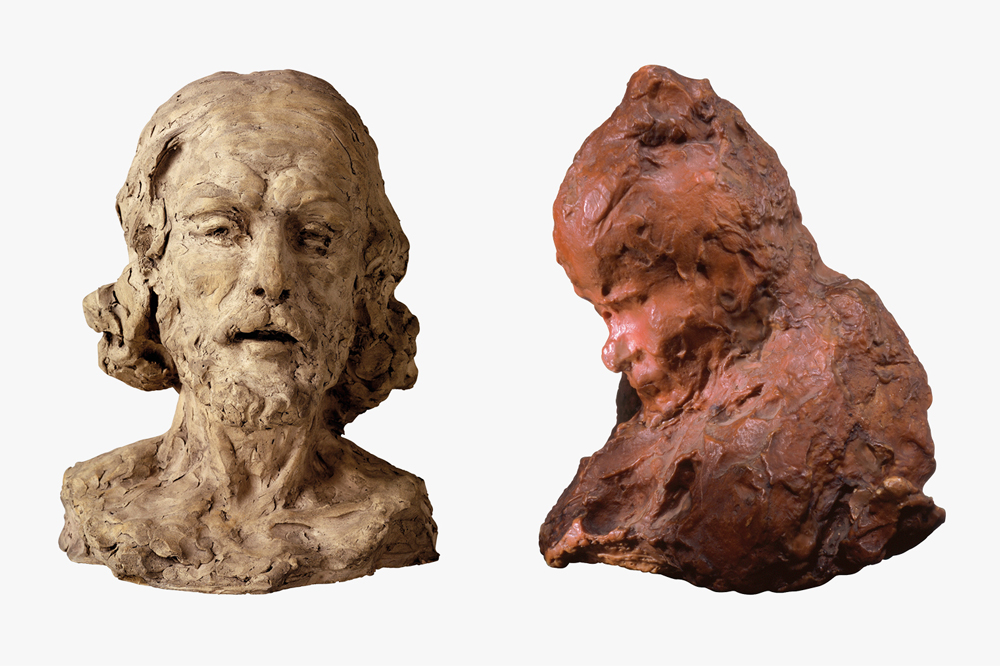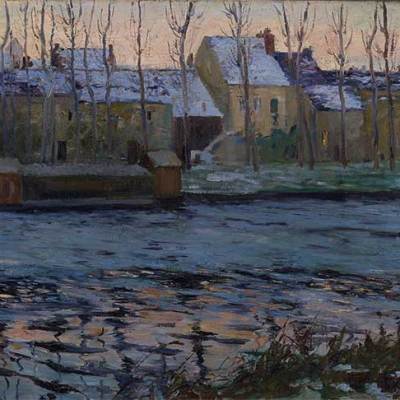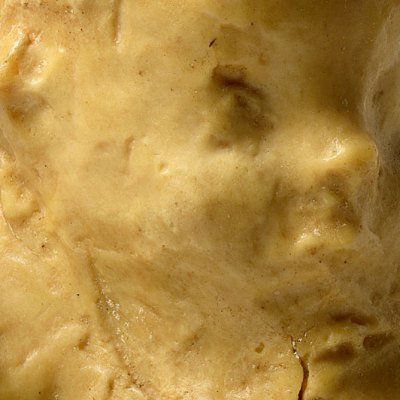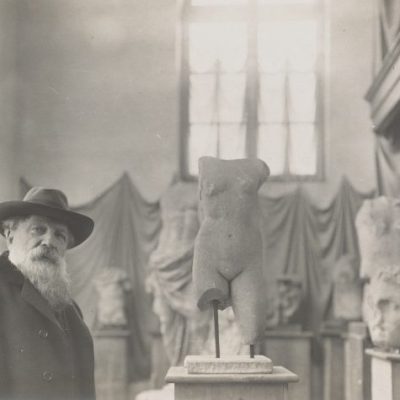‘Good God! We are going to see Impressionist sculptors!’ exclaimed the critic Jules Claretie after seeing Degas’s Little Dancer of Fourteen Years (c. 1880) at the Impressionists’ sixth Salon des Indépendants in 1881. His is the first known reference to any kind of ‘impressionist sculpture’, a term more or less unrecognised today, and hardly a promising initial reaction. The work disturbed audiences with the creepy realism of its tutu, ribbon and human hair, and Claretie saw it as a gratuitous rejection of tradition, adding dryly that ‘they are starting to affirm their independence in the form of sculpture. Colour was not enough’.
‘En Passant’ at the Städel Museum takes a fresh look at Impressionist sculpture, starting with Degas before considering four more artists the movement inspired: Rodin, Medardo Rosso, Rembrandt Bugatti and Paolo Troubetzkoy. The historical looseness of the label ‘Impressionist’ is established from the first room, which contains a rough reconstruction of the Impressionist painters’ self-curated Salons. The Luncheon (1868–69) by Monet is framed between two statues by Auguste Ottin, an academic sculptor who, as a supporter of the Impressionists, presented 10 works at their exhibitions but cannot otherwise be associated with the movement. Though the Salons were proudly interdisciplinary, only seven more works categorised as sculpture were included across all eight editions.
In the absence of much competition, then, the Little Dancer would seem to be the best available example of Impressionist sculpture, and its fame has made it the star of the Städel’s promotional posters and catalogue cover. This is something of a red herring as the rigidity of the figure turns it into a foil for Degas’s lesser-known small-scale studies – ballet dancers, arabesques and racehorses. Their richly kneaded surfaces bring to mind the typical Impressionist descriptor ‘painterly’, and visible brushstrokes might just meet their match in visible fingerprints.
Grand Arabesque, Third Time (First Version; c. 1885–1890), Edgar Degas. Photo: Ken Adlard

The comparative ease with which painting evokes transience and movement, however, remains a major obstacle to accepting sculpture as an Impressionist medium. Recognised instead for its permanence and solidity, sculpture surely cannot capture the ephemerality of a fleeting moment – or can it? The title of the exhibition, ‘En Passant’, addresses this question head-on, inviting us to rethink our assumptions by drawing our attention to Degas’s numerous wax and clay studies. Emerging from obsessive readjustments of their wire armature in an animated process not unlike puppetry, they were never intended to be cast, let alone exhibited. Instead Degas studied the figures as he spun them in his ‘shadow cabinet’, which has been recreated for the exhibition – their shifting silhouettes on white sheets blurring the lines between the second and third dimension.
The exhibition borrows from Degas’s multimedia approach by setting sculptures in conversation with works on the wall. One case highlights the tactility found also in the artist’s later pastels, the cragged surfaces of which have been smeared by hand. Other exhibits include intentionally fragmented bodies, the isolated, awkward bend of an arm echoing the strange, off-stage vantage points found in his paintings. Most appealing are his racehorses, experimental studies for comparatively formal commercial compositions and evidence of Degas’s growing dependence on sculpture to depict movement. In one dated to the 1890s, the withered distortion of the horse’s head suggests its body flashing in and out of focus as it whips past the eye.
The work of the other four sculptors here shows us different ways in which Impressionist influence manifested itself. A modest collection of animal subjects by the Italian sculptor Rembrandt Bugatti offers attractive snapshots rather than anatomical studies. The Italian focus continues in a room dedicated to the aristocratic artist Paolo Troubetzkoy, evidence that the lessons of Impressionism were applied in more conventional contexts. Portrait sculptures by Troubetzkoy impress for their fabrics, which cast shimmering interplays of light, and have been generously but judiciously staged beside loaned works by Sargent and Whistler.
Giovanni Segantini (1896), Paolo Troubetzkoy. Staatliche Museen zu Berlin, Nationalgalerie. Photo: Andres Kilger

Impressionist sculpture soon became a point of debate, and in ‘De l’Impressionnisme en sculpture’ (1902), a major essay on the subject by the critic Edmond Claris, the focus shifted to the work of Medardo Rosso and Rodin. The latter’s work is staged grandly here in a setting inspired by the exhibition pavilions he constructed himself, with members of his circle introduced on the sidelines. The Waltz (1889–1905) by Camille Claudel is a highlight, with the sweep of the female partner’s dress somehow both anchoring and buoyant. In Rodin Sculptant (1900), a wonderful lithograph portrait by Eugène Carrière, to whom Rodin was often likened, the sculptor’s hands disappear into the plaster as both he and it become mere traces of shadow and light. Though most of Rodin’s works deal with traditional, even religious, subjects, examples like his Head of Saint John the Baptist (1877/78) have an unfinished, sketched quality that was linked to the unvarnished canvases of Monet in a joint exhibition held at the Georges Petit gallery in Paris in 1889.
‘Where Rodin stopped, that was Medardo Rosso’s starting point,’ writes Claris, who elevates the Italian sculptor above his older French contemporary. In this exhibition too Rosso’s works easily surpass those of his contemporaries, and it is a shame that some intended examples were not able to travel from northern Italy before lockdown. Many successfully give the impression of something the artist has seen in passing. La Portinaia (1883/84), for example, might well be lingering in our peripheral vision as we pass a darkened corner of a dingy hotel. The face of Il bookmaker (1894) is almost featureless while his looming, unsteady shape seems to melt into shrouds of rising shadows. The contours of Sick Man in Hospital (1889) dissolve in a thick film of wax, a physical manifestation of the subject’s sickness, slackness and senility.
Rosso and Rodin were mutual admirers until they became rivals, upon the completion of Rodin’s monument to Balzac in 1897. Finding the writer’s tilted posture similar to that of his bookmaker, Rosso believed the influence had not been properly acknowledged. Whether this is true or not, the works might be more usefully defined by their glaring differences, above all in their sculpturality and relationship to the surrounding space. In any case, the squabble leaves unresolved the question of which is a more credible piece of Impressionist sculpture. As with every work in this inquisitive exhibition, the final verdict rests with the viewer.
‘En Passant: Impressionism in Sculpture’ is at the Städel Museum, Frankfurt, until 25 October.
From the October 2020 issue of Apollo. Preview and subscribe here.



